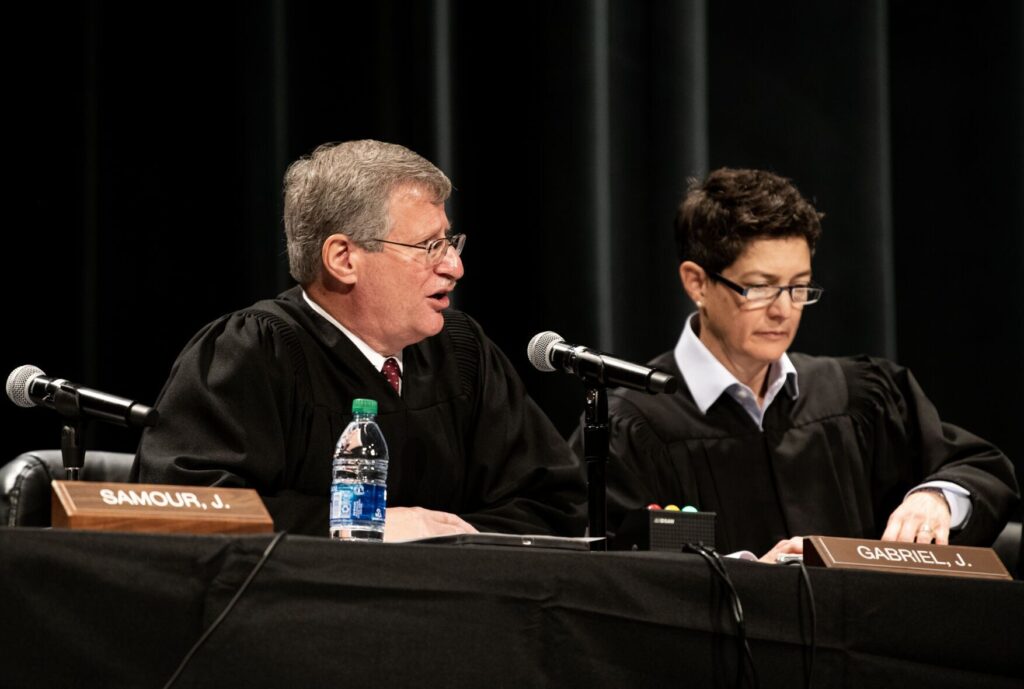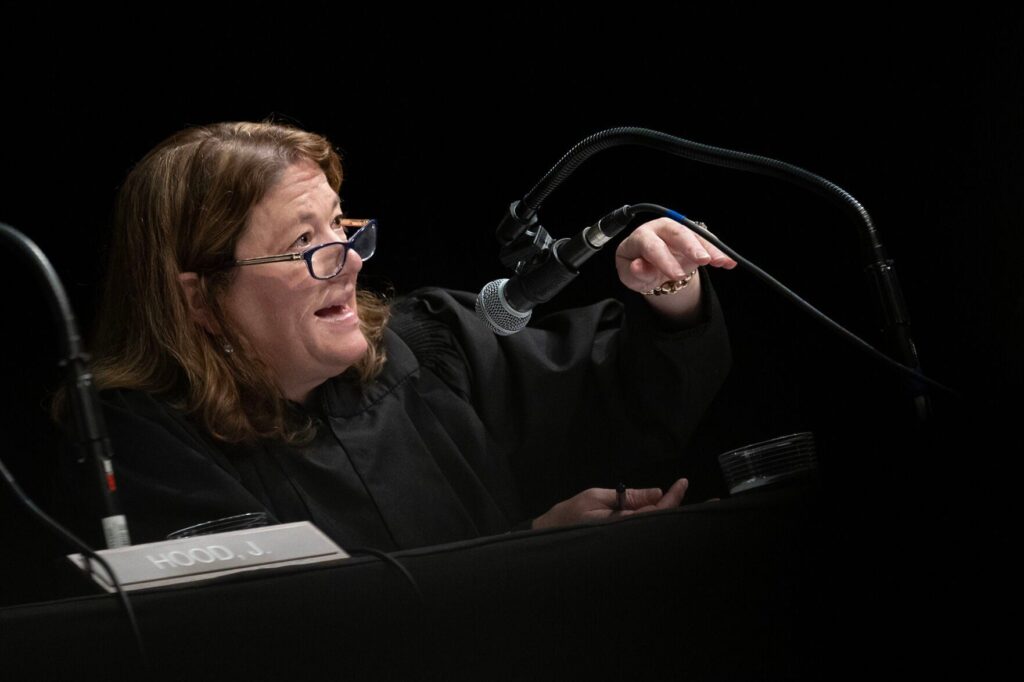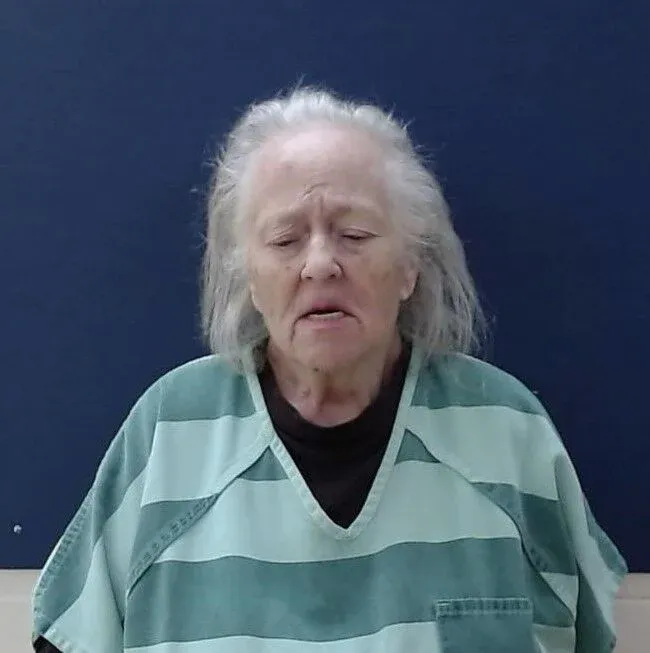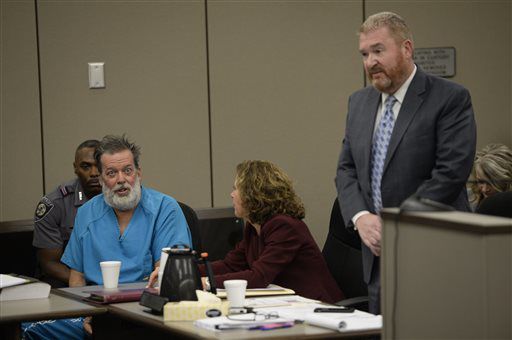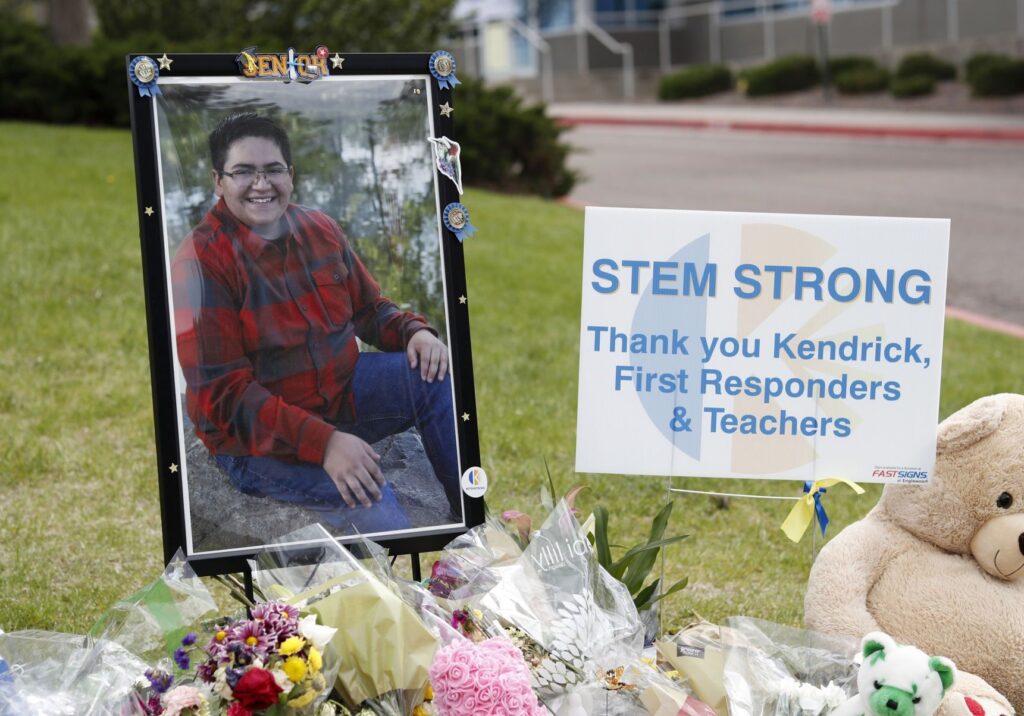Colorado justices skeptical that Colorado Springs is immune for crash caused by faulty signal
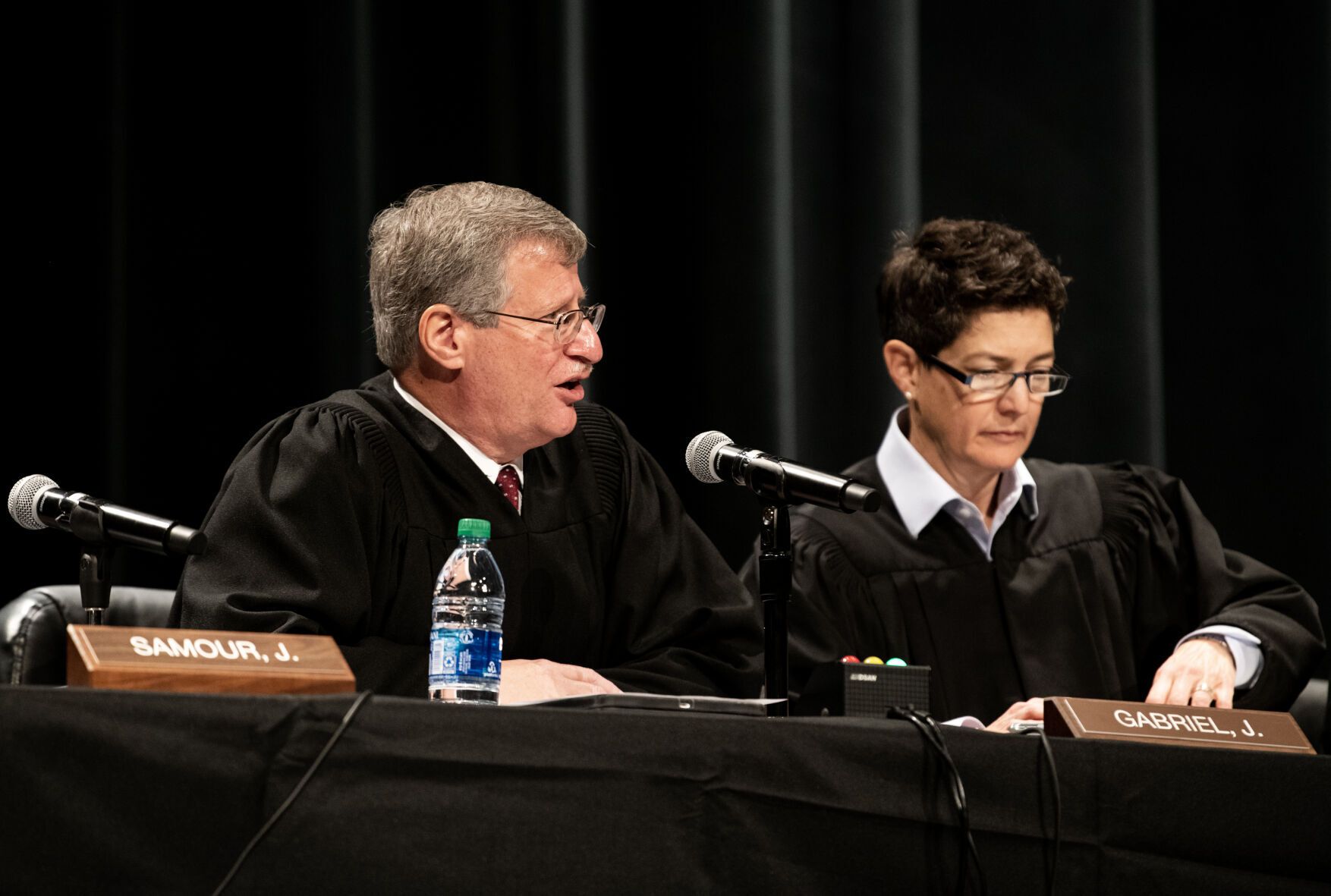
Members of the Colorado Supreme Court seemed doubtful on Wednesday that the city of Colorado Springs cannot be sued over a collision that occurred as a result of traffic lights that were functioning normally in one direction, but were inoperative in the perpendicular direction.
Construction was occurring at the intersection of South Tejon Street and East Costilla Street in August 2019 when Bernard E. Sandoval drove up to the intersection and faced an unilluminated light. Treating the intersection as a four-way stop, he proceeded and was hit by a driver traveling in the perpendicular direction whose light was green.
The question for the Supreme Court was whether Sandoval could sue Colorado Springs for creating a dangerous condition. The Colorado Governmental Immunity Act generally shields public entities from lawsuits over injuries they cause. There is an exception, however, if the government fails to address “a traffic control signal on which conflicting directions are displayed.”
Previously, the state’s Court of Appeals believed the lights in Sandoval’s case were not “conflicting.” But during oral arguments, the justices strongly suggested they disagreed.
“When you have one not working and one working, why is that not a conflict?” asked Justice Richard L. Gabriel. “Don’t we want the city to fix that immediately? It’s clearly a hazard.”
“What I struggle with is that it seems as though Mr. Sandoval did what he was required to do. And because of the circumstances, he still ends up getting hit because it’s such a recipe for an accident,” added Justice William W. Hood III.

Sandoval sued various parties for negligence, which prompted the city to invoke the governmental immunity law. Fourth Judicial District Court Judge Amanda Philipps declined to dismiss the lawsuit, finding the conflicting-directions exception applied.
On appeal, the city maintained the signals did not conflict because it was possible for Sandoval to treat his light as a stop sign and for the other driver to proceed on green without inevitably colliding.
A three-judge Court of Appeals panel agreed. Under Colorado’s traffic laws, explained Judge Ted C. Tow III, the driver with a green light should proceed normally and the driver facing an inoperative light has the obligation to proceed only when the intersection is clear.
Because the drivers who collided “could have followed these directions simultaneously without issue, the signals were not incompatible,” he wrote.
The Supreme Court, however, was concerned about the panel’s focus on the driver and not the light.

“The Court of Appeals seized on, ‘Well, what Mr. Sandoval should have done was stop until it was clear to go, and was wrong to assume it was a four-way stop.’ And I wonder whether that analysis is the right one,” said Gabriel. “Whether we should be getting into what a reasonable driver would have done … and whether we would just look at whether the signals were in conflict.”
“We have to ask ourselves, what does that dark, unilluminated signal mean?” said W. Erik Lamphere of the City Attorney’s Office. “And it doesn’t mean to proceed through that intersection without regard.”
“I have trouble seeing why an objectively reasonable person would not have treated that as a four-way stop when you’re there in the moment,” countered Gabriel. “In retrospect, you say, ‘Oh, now I know the other side was working.'”
Justice Brian D. Boatright asked Lamphere if it amounted to a dangerous condition for one set of lights to be dark and the perpendicular lights to be operational. No, not inherently, said Lamphere.
“Do you think if that was the light situation, the city would be like, ‘We’ll get to that in a couple days, it’s no big deal?'” Boatright asked. “Or would they be like, ‘We need to get out there because that’s a dangerous situation’?”
“It is an unusual situation,” said Lamphere.
Justice Melissa Hart did not attend the arguments. She has been on a leave of absence since late October for “family and personal health reasons.“


